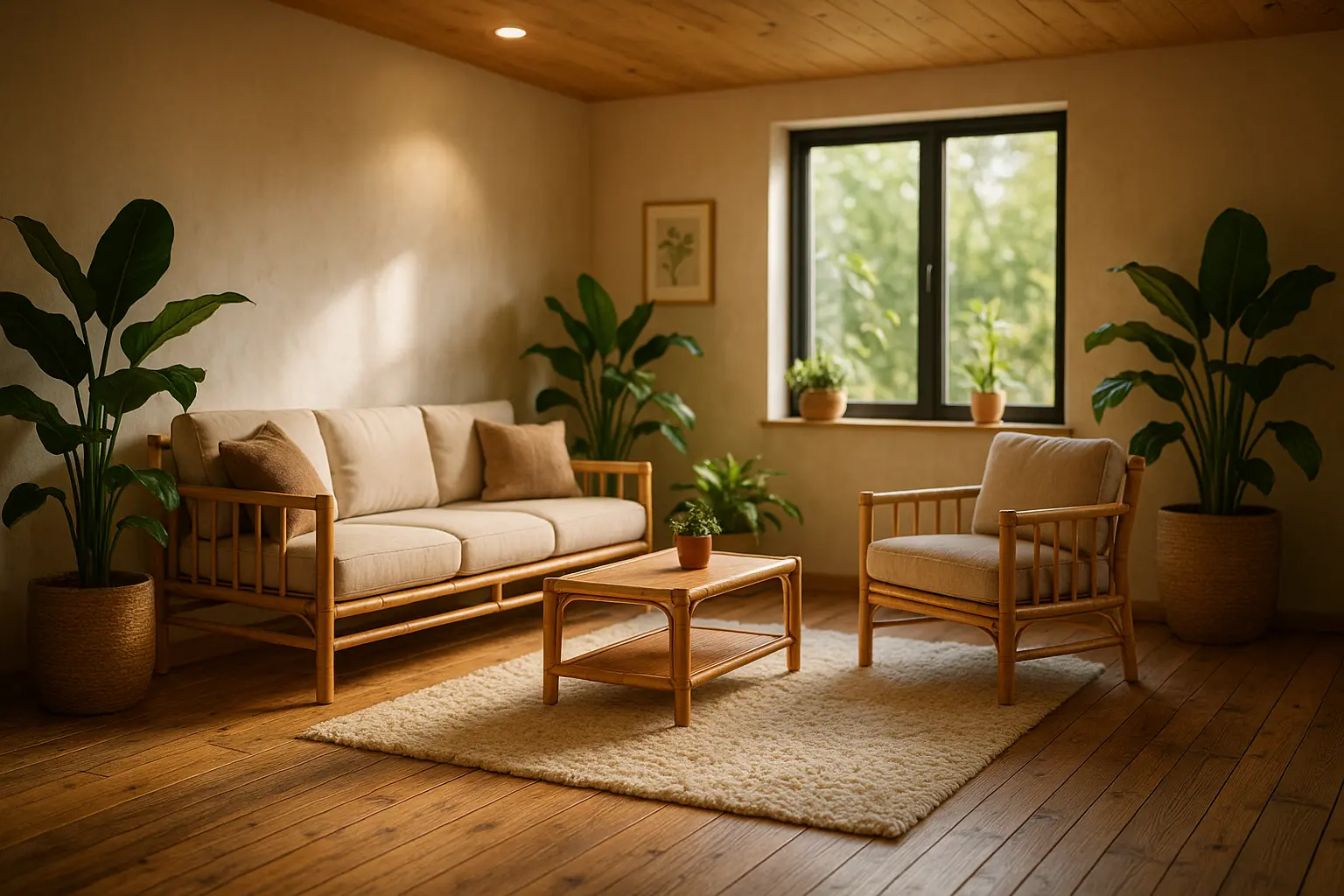In an age where environmental consciousness guides many of our lifestyle choices, the quest for a sustainable and eco-friendly home has become a vital pursuit. As we embark on our renovation journeys, let’s envision a space where energy efficiency and natural harmony coexist seamlessly. With a focus on quality materials, we can bring an environment that nurtures both our living spaces and the planet.
Harnessing the Power of Natural Materials
Natural materials offer a multitude of benefits when it comes to creating an eco-friendly home. They not only enhance the aesthetic of our spaces but also contribute to better indoor air quality and energy efficiency. By choosing sustainable options like reclaimed wood, bamboo, and cork, we create homes that exude warmth while being kind to the environment.
The Charm of Reclaimed Wood
There’s undeniable beauty in the knots and grains of reclaimed wood. Each piece tells a story, adding character and uniqueness to our homes. Sourced from old buildings or salvaged from demolition sites, reclaimed wood offers a green alternative to newly harvested lumber. Its durability ensures longevity, making it an ideal choice for flooring, wall paneling, or even furniture.
Bamboo: The Fast-Growing Wonder
Bamboo stands out as one of the most sustainable building materials available. With its rapid growth rate, bamboo can be harvested without causing long-term damage to the environment. Its versatility allows it to be used in various applications, from flooring to cabinetry. Moreover, bamboo’s natural resistance to pests makes it a friendly choice for those aiming to maintain a healthy home environment.
The Quiet Elegance of Cork
Cork, derived from the bark of cork oak trees, is another eco gem in the world of renovations. Its soft texture and thermal insulation properties make it perfect for flooring and wall coverings. Cork is not only renewable but also resistant to mold and mildew, ensuring a quality indoor environment.
Embracing Energy Efficiency with Windows and Solar Power
In the pursuit of an efficient home, our focus often turns to the windows and energy systems we choose. By integrating solar energy solutions and optimizing window efficiency, we can significantly reduce our carbon footprint while enjoying lower utility bills.
The Science of Efficient Windows
Windows are integral to any renovation project, and selecting the right ones can make a world of difference. Energy-efficient windows minimize heat loss in the winter and reduce heat gain in the summer. Features such as double or triple glazing, low-emissivity coatings, and insulated frames enhance their performance, contributing to an overall reduction in energy consumption.
Lighting Up with Solar Power
The sun provides a vast, untapped source of renewable energy. By installing solar panels, we can harness this power and convert it into electricity, heating, or even cooling for our homes. This transition not only decreases our dependency on non-renewable resources but also leads to significant cost savings over time. Embracing solar energy is a step towards a more sustainable living experience.
Water Conservation and Efficient Systems
Water, a precious resource, requires thoughtful management when planning a remodeling or renovation project. By implementing systems that reduce water consumption and optimize efficiency, we contribute positively to our environment and ensure a sustainable future.
Smart Water Fixtures
Modern technology has revolutionized water efficiency in homes. Low-flow faucets, showerheads, and toilets are designed to minimize water usage without sacrificing performance. These fixtures not only help conserve water but also reduce our water bills.
Greywater Recycling Systems
Greywater recycling systems are gaining popularity as a means of reusing water from sinks, showers, and washing machines. Treated greywater can be repurposed for irrigation or toilet flushing, reducing the overall demand for fresh water. By integrating these systems, we move closer to creating a sustainable home that respects the planet’s resources.
Rainwater Harvesting
Collecting and storing rainwater is another efficient way to conserve water. By installing rain barrels or larger cisterns, we can capture rainwater for various non-potable uses, such as watering gardens or washing vehicles. This practice not only conserves water but also reduces the strain on municipal systems.
Creating a Healthy Indoor Environment
A healthy home environment is crucial for our well-being. By focusing on materials and practices that promote air quality and reduce exposure to harmful substances, we craft spaces that are as nurturing as they are beautiful.
Choosing Low-VOC Materials
Volatile Organic Compounds (VOCs) are chemicals found in many conventional building materials and finishes. They can off-gas harmful pollutants into our homes, affecting air quality and health. Opting for low-VOC paints, adhesives, and finishes is an effective way to ensure cleaner air and a friendly environment.
Ventilation and Air Filtration
Proper ventilation plays a pivotal role in maintaining quality indoor air. By installing energy recovery ventilators or improving existing ventilation systems, we enhance air circulation and remove stale air. Incorporating HEPA filters in our HVAC systems can also trap allergens and pollutants, leading to fresher, cleaner air.
Incorporating Plants for Natural Air Cleaning
Plants are not just decorative elements—they are natural air purifiers. Incorporating indoor greenery helps filter toxins from the air while adding a touch of nature to our living spaces. From spider plants to peace lilies, a variety of houseplants can contribute to a healthier home environment.
As we navigate the path of renovation, it’s essential to keep in mind that every choice we make impacts the environment and our living spaces. By embracing sustainable materials, optimizing energy and water usage, and ensuring quality air, we take significant steps towards a healthier, more eco-friendly home. Let us continue to explore, innovate, and inspire as we join hands in crafting homes that are not just structures but sanctuaries that cherish the earth and nurture our families.
FAQ
What are some eco-friendly materials I can use for flooring during a home renovation?
Bamboo, cork, and reclaimed wood are excellent sustainable choices. They are not only renewable resources but also durable and add a natural aesthetic to your living space.
How can I ensure my new insulation is environmentally friendly?
Opt for insulation made from recycled materials such as denim or cellulose. Wool and cork are also great alternatives, offering excellent thermal properties while being biodegradable.
Are there sustainable options for kitchen countertops?
Yes, materials like recycled glass, bamboo, and reclaimed wood are popular eco-friendly choices. They provide durability and a unique look tailored to an environmentally conscious home.
What type of paint should I use to maintain indoor air quality?
Choose paints that are low in volatile organic compounds (VOCs) or completely VOC-free. These options minimize the release of harmful chemicals, ensuring a healthier indoor environment.
How can I incorporate sustainable practices in my renovation process?
Consider sourcing locally-produced materials to reduce transportation emissions. Reuse and repurpose existing materials where possible, and work with contractors who prioritize sustainable practices in their projects.


